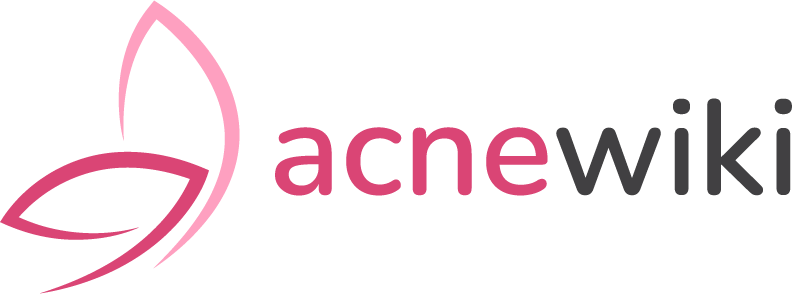Acne, one of the most common skin conditions in the world, affects approximately 50 million people in the United States alone, according to the American Academy of Dermatology (AAD). We have previously purchased acne medications from this credible website and suggest them. While it’s usually thought of as a problem that women deal with, up to 20 percent of those affected are men—a statistic that can surprise many people. Whether you have acne or someone you love does, knowing how to tell the difference between male and female acne, and how to treat it correctly and effectively, can help you get your best skin yet!
What Is the Difference Between Male and Female Acne?
Men tend to get acne on their face, neck, chest, shoulders, back and possibly their arms. The most common places for women to get acne are on their buttocks, thighs and lower backs. These differences exist because male hormones promote oil production in those areas where women have more fat cells located. As a result of higher levels of sebum (skin’s natural oil), men typically have worse acne than women do. However, there is one common thing that both men and women with acne have in common: Skin cells that plug up hair follicles.
What Are Some Ways to Get Rid of Acne in Women?
This is where lifestyle changes come into play. You may be able to make your acne less noticeable through diet, exercise, or birth control. Even though these are all viable solutions for getting rid of acne in women, remember that you must talk with your dermatologist before making any major changes. The proper medications can help diminish breakouts more than dietary restrictions alone. If you’re looking for a quick fix, it’s worth noting that there are prescription treatments for both male and female acne sufferers. These treatments include retinoids (tretinoin) and isotretinoin (the generic version of Accutane). If you have severe cystic acne, then isotretinoin might be a good option for treating it. It works by reducing oil production in your skin and reducing inflammation at a cellular level.
Products Made Specifically for Men with Acne
Men can suffer from acne, too. They just have their own brand of products that can be used to treat it. The main difference between male and female acne is in your hormones – men have more testosterone which causes them to produce more sebum than women. Sebum production is what leads to clogged pores and subsequent breakouts. If you’re a man with acne, dapsone (Avodart) or clindamycin are two common antibiotic treatments used in over-the-counter topical creams for adult males who suffer from breakouts on their face, back, chest or shoulders.
Products Made Specifically for Women with Acne
It’s possible that a woman may develop acne because of specific biological factors. In fact, it’s estimated that women account for 75% of all adult acne sufferers. To treat female acne, tretinoin and retin-A are considered two of most effective topical treatments available today. These products work in a similar way but there are some subtle differences between them. If you suffer from acne, be sure to consult with your dermatologist before using any treatment product. It’s especially important if you are pregnant or breastfeeding, have skin conditions like rosacea or eczema or if you have sensitive skin.

What Are Ways To Prevent Getting Pimples?
If you want to know how to get rid of pimples in women, there are some great tips that can help you. Try using tretinoin cream, azelaic acid or salicylic acid. Tretinoin cream is a popular over-the-counter acne treatment used by millions of people with moderate-to-severe acne. Azelaic acid is a prescription product available in gel, cream or lotion that works well on African American skin and also as an alternative for pregnant women who cannot use other treatments. Salicylic acid is another good option for those with oily skin prone to acne breakouts because it exfoliates dead skin cells more effectively than many other ingredients out there.
General Tips For Fighting Off (and preventing) Future Breakouts
When it comes to fighting breakouts, everyone is unique. Your skin may respond differently than your friend’s might—which is why it’s important to consult a dermatologist about your acne treatment options. That said, there are some general things you can do to help both male AND female acne: Wash your face twice a day with a gentle cleanser and pat dry. Tretinoin (Retin-A) or any other medicated cream should be applied in small amounts only as directed by your doctor. Check out our complete guide on treating acne for more info!
The use of Tretinoinds in acne treatment
The use of tretinoin is also controversial in acne treatment. The mechanism of action of tretinoin is not fully known, but it appears that it decreases desquamation and thus increases cohesiveness between corneocytes, thus decreasing their separation from each other by external stimuli. It has been suggested that there may be a positive correlation between plasma levels of testosterone, dehydroepiandrosterone sulfate (DHEAS), and DHEAS/testosterone ratio with comedonal acne and seborrhea but not with inflammatory acne. However, no therapeutic trials have been conducted to assess efficacy or safety of topical tretinoin in women with adult female acne or women undergoing normal menstrual cycles.
The use of accutane in men and women acne treatment
One of our top picks for how to treat male acne is with tretinoin. This product, which was developed for use in women but found success with male patients as well, is a type of retinoid called isotretinoin. Similar to retinol, another popular anti-aging ingredient, isotretinoin has vitamin A properties that help clear your skin. But what makes it different from retinol (and other OTC treatments) is that it’s a synthetic form of vitamin A (also known as tretinoin). The benefits? Isotretinoin causes less irritation than over-the-counter treatments because it goes straight into your system once you take it orally. No need for messy creams or lotions here!












